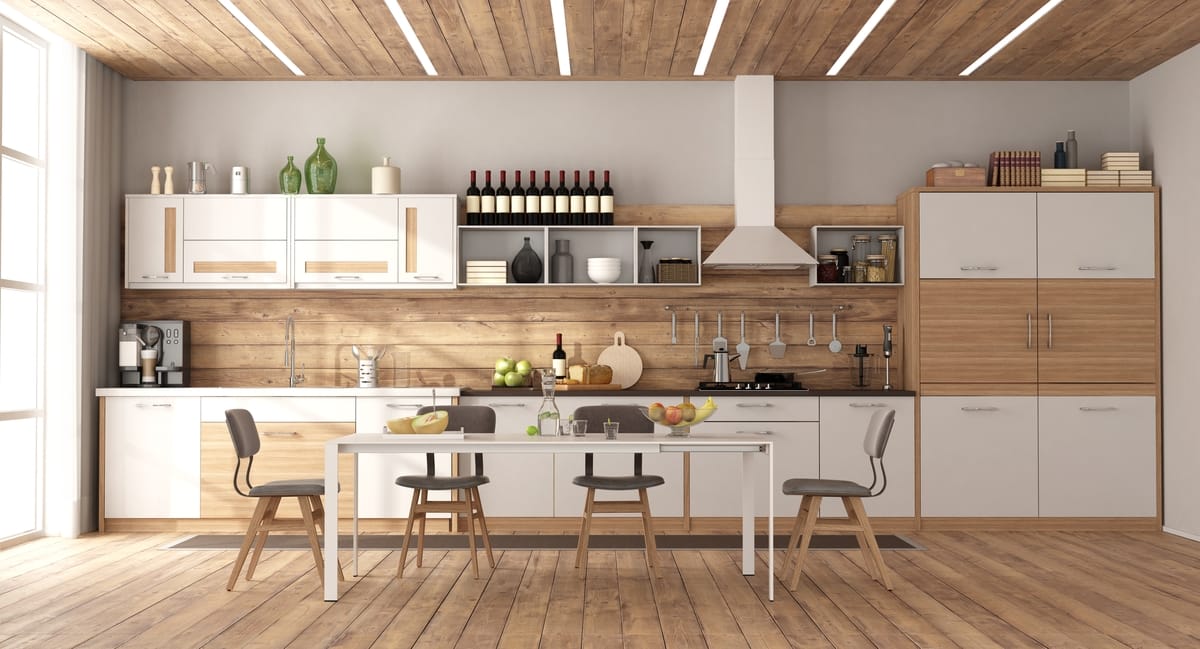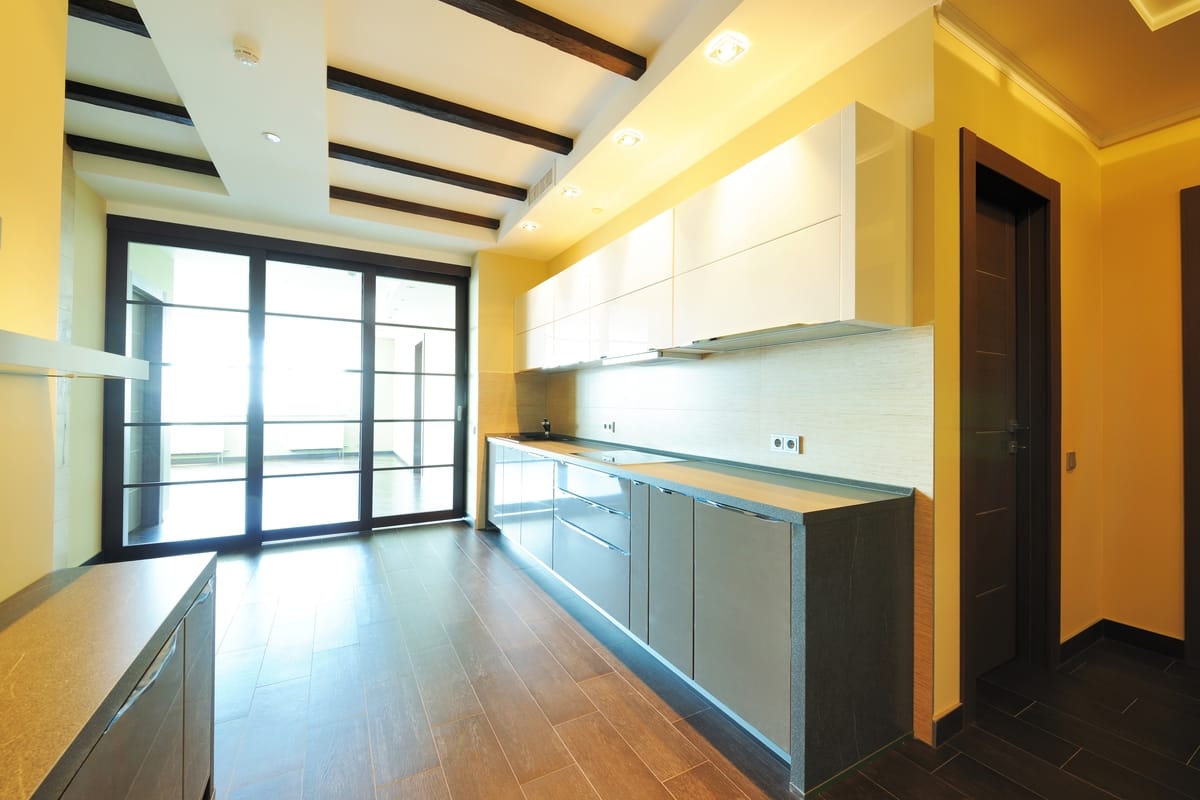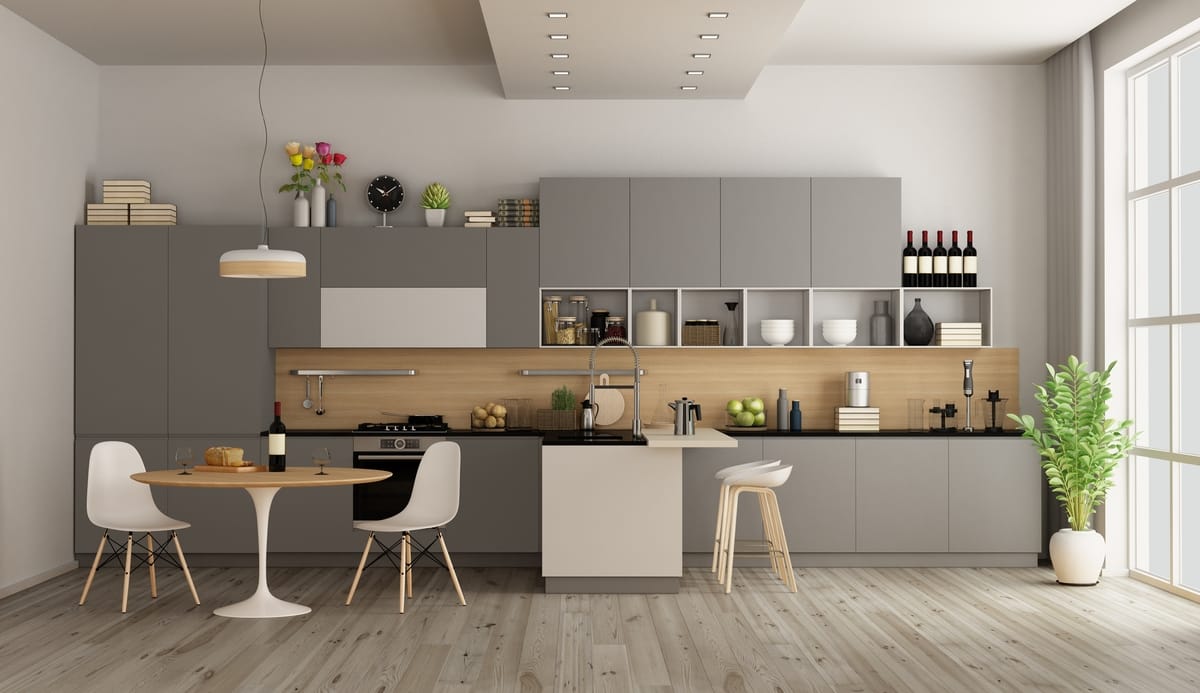Things To Consider Before Installing Kitchen Floorings Yourself

We pay very little attention to our kitchen floors until something happens to them, once you consider what we actually put them through (heat from cooking, cold winter nights, dropping heavy objects, dropped food, splashed water and oils, muddy, sandy, gritty shoes) and the potential this has to damage your floor, the more you'll appreciate choosing flooring you don't have to worry about. Here we will explain your best choices from the range of flooring we supply and fit.
Vinyl floors
All of our vinyl flooring is waterproof. They are made from PVC which means it just doesn't react with water. It is easy to clean and hard to stain. Vinyl is also tough and can take the high traffic and abuse a kitchen floor can suffer. Vinyl Flooring is the toughest kitchen floor we currently have on offer.
View our range of vinyl flooring
Laminate floors
Laminate flooring is pretty tough against scratches and can easily be patched if a scratch or dent were to happen. There are laminate floors that have pretty good resistant to moisture and splashes, but splashes must be cleared up immediately as they can seep in over time. Steam cleaners also should never be used on laminate floors as they push moisture into the board.
Our Quick Step Impressive range is waterproof and has a beautiful realistic finish, which makes it perfect for kitchen floors.
View our range of Quick Step Impressive flooring for kitchens and bathrooms or Quick Step Impressive Ultra
Real wood floors
As long as you are prepared to clean up spills straight away and keep to a maintenance routine, solid wood can work well in a kitchen. It is not only beautiful to look at, it is warm and natural and will work in a modern or traditional style kitchen.
Oak is the strongest domestic species, it has a rich grain and exquisite texture making your flooring look stunning and unique, it also helps disguise small dents and scratches that are bound to occur over time.
It is a natural product, and can contract and expand as temperature and moisture levels rise. This becomes an issue in large kitchens because of the steam and heat.
If you have set your heart on real wood, then engineered wood is a better option. Engineered wood can still contract and expand, but not at the same level as solid wood. Their design also allows for the changing conditions when laid over a slab concrete floor.
See our range of wood and engineered wood flooring
Installing flooring in kitchens
Here is some advice about whether to install flooring under fitted units and freestanding appliances.
We think it is better to install the floors up to the edge of your fitted units but go under freestanding appliances and freestanding kitchen units.
Reason not to install floors under fitted units:
- You will save a lot of money on flooring you will never see because it is hidden under units
- Kitchen units can be heavy and create huge pressure on areas of your floor, causing buckling and breaking.
- Laying flooring last means no damage from workmen.
- Leaving it last means accurate measurements of the space so less wastage.
- In the future you can replace flooring without having to take all your units out.
Reason to install under free standing appliances:
- Makes it easier getting appliances out once they have to be replaced.
- Installing a washing machine on concrete flooring then laying your flooring up to the front of it will make it extremely difficult getting it out.
- You can't drag a washing machine across concrete
- It is hard to lift a washing machine over the lip of the flooring while you only have a small gap between the machine and the work surface.
- With some washing up liquid on the feet of the washing machine, you'll easily be able to slide it into place.
Floor angles
This is mainly a consideration when using real wood or wood-effect boards because of the direction of the wood grain and the shape of the plank.
Two things to consider when you are thinking about which direction to lay your flooring in, is where the light enters your room and where the entrance to the room is. If light enters your room from a patio window on the South side of your room, the floor should be laid length ways away from the window (South to North), this allows the light to scatter across the grain, while highlighting the texture if any.

If you have many light sources then laying your flooring length ways away from the entrance to the room is a good idea as it draws the eye in the direction of the room making it look bigger.

If you want a room to appear bigger, then use the length of the board in the direction you want the room to seem longer.
People are now enjoying laying flooring at odd angles that doesn't flow with the room or light source which is really eye catching and makes a statement.
It still comes down to your own personal preference, do what makes you feel happy.
If you need help preparing sub-flooring and fitting please view our services pages to see how we can help.
Comments are switched off for this blog.